Begonia Melanobullata, a fascinating member of the Begonia genus, is a unique and eye-catching plant that can be a delightful addition to your indoor garden. In this section, we’ll explore the key characteristics and background of this distinctive begonia species.
Begonia Melanobullata, also known as “Black Eyed Begonia,” is an exotic and visually appealing begonia variety, famous for its striking black dots on the leaves. This particular begonia is native to regions of Southeast Asia, where it thrives in the humid and tropical climate. Its distinctive appearance, coupled with its relatively easy care requirements, makes it a sought-after choice for many plant enthusiasts.
Key Features of Begonia Melanobullata
To better understand Begonia Melanobullata, let’s take a closer look at its defining characteristics:
- Leaves: The most prominent feature of this begonia is its unique foliage. The leaves are medium-sized, deeply green, and adorned with small, almost black spots, hence the common name “Black Eyed Begonia.” These striking patterns make Begonia Melanobullata a stunning choice for plant collectors.
- Growth Habit: This begonia is a compact and bushy plant, with a somewhat upright growth habit. It typically reaches a height of around 8-10 inches, making it a suitable choice for tabletops, shelves, or as part of a decorative arrangement.
- Flowers: While the primary attraction is its foliage, Begonia Melanobullata does produce small and delicate pink flowers. These flowers are charming but not the main focus of this plant.
- Light Preferences: Begonia Melanobullata prefers bright, indirect sunlight. It thrives in conditions where it gets filtered light or is placed near a north or east-facing window.
- Watering Needs: This begonia enjoys evenly moist soil, but it’s essential to prevent waterlogged conditions. Allow the top inch of soil to dry out between watering sessions to maintain proper moisture levels.
- Temperature Range: Begonia Melanobullata is comfortable in temperatures between 60-75°F (15-24°C). It’s crucial to protect it from extreme cold or heat.
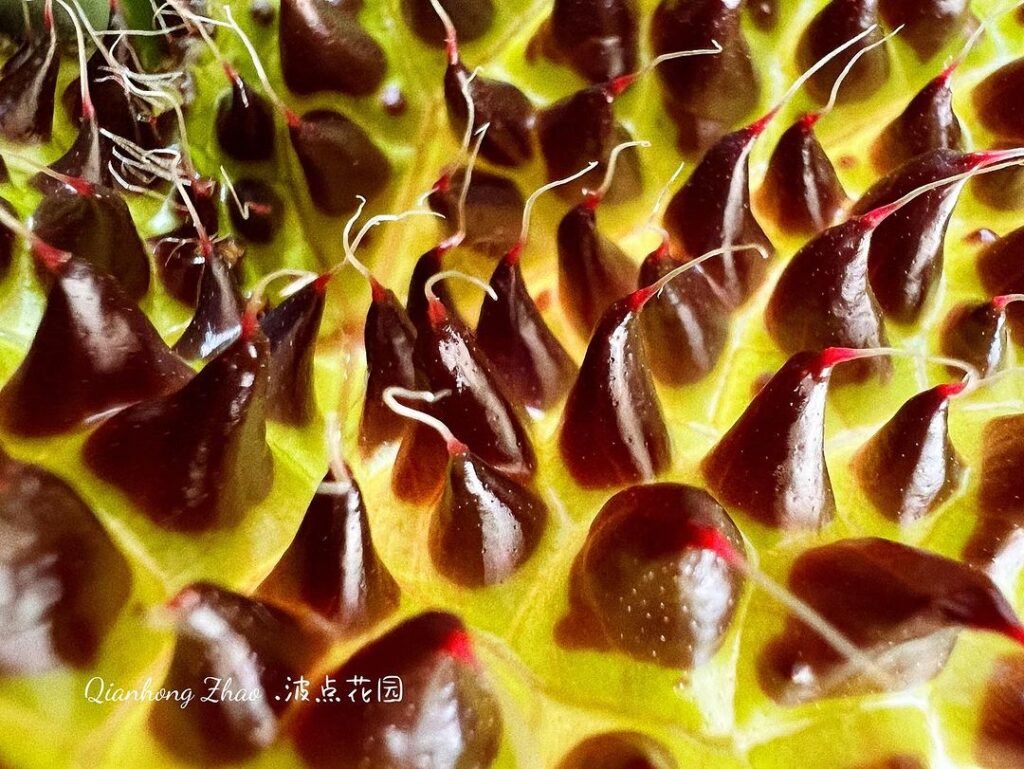
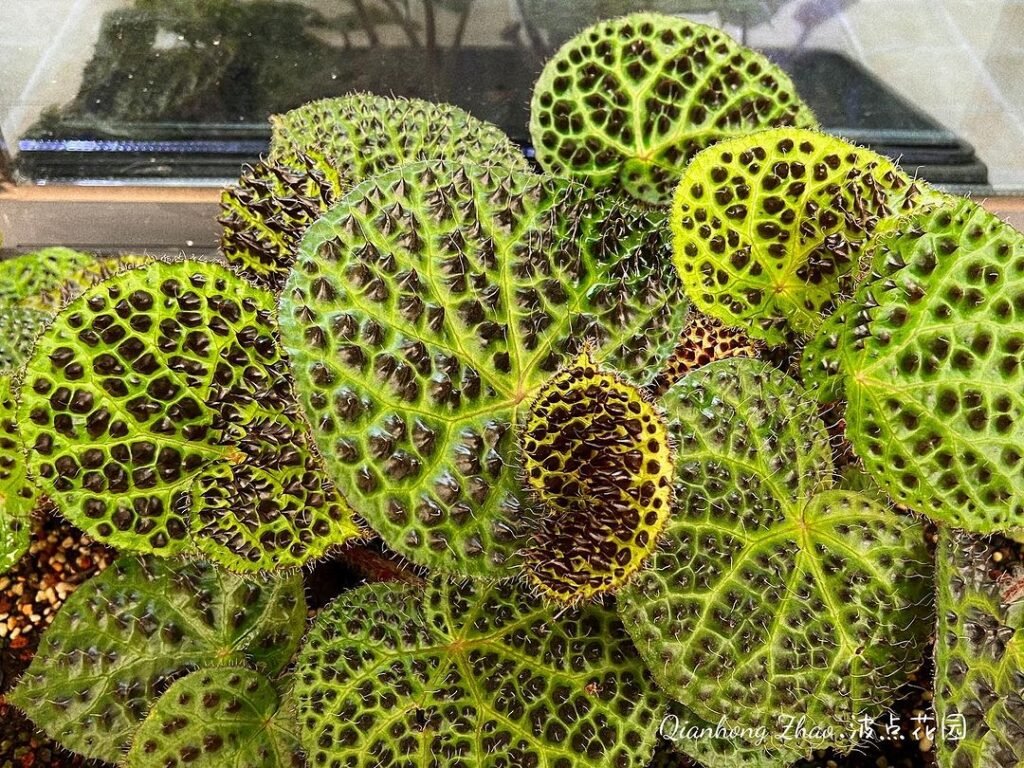

Genus Species
Begonia Melanobullata belongs to the vast and diverse Begonia genus. In this section, we’ll delve into the broader context of its genus and species, shedding light on its classification and related plant varieties.
The Begonia Genus
The genus Begonia is a large and diverse group of flowering plants comprising over 1,800 different species. These plants are known for their attractive foliage, vibrant flowers, and adaptability to various environments. Begonias can be found in both tropical and subtropical regions across the world.
Diversity of Begonia Species
Within the Begonia genus, you’ll encounter an array of unique species, each with its distinct features and care requirements. Begonia Melanobullata, with its captivating spotted leaves, is just one of the many begonia varieties that plant enthusiasts adore. Other notable begonia species include Begonia Rex, Begonia Maculata, and Begonia Tuberhybrida, each bringing its own charm and appeal to the world of indoor gardening.
Begonia Classification
Begonias are further classified into several groups based on their growth habits, foliage, and flower characteristics. Common categories include:
- Cane-like Begonias: Known for their tall, woody stems and upright growth.
- Rhizomatous Begonias: These have thick, creeping rhizomes and eye-catching leaves.
- Tuberous Begonias: Renowned for their showy, rose-like flowers, often used in outdoor gardens.
- Semperflorens Begonias: Compact and ideal for bedding or container gardening.
Begonia Melanobullata Appearance
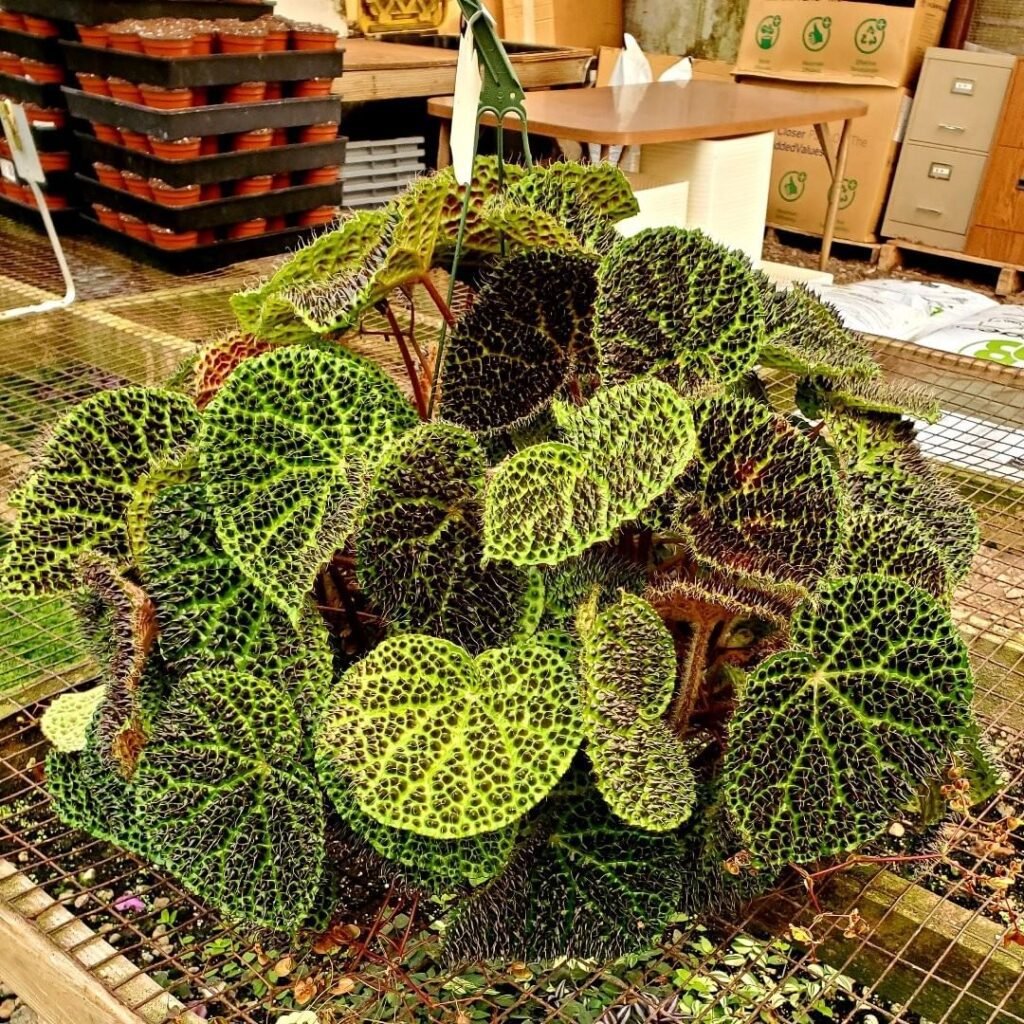
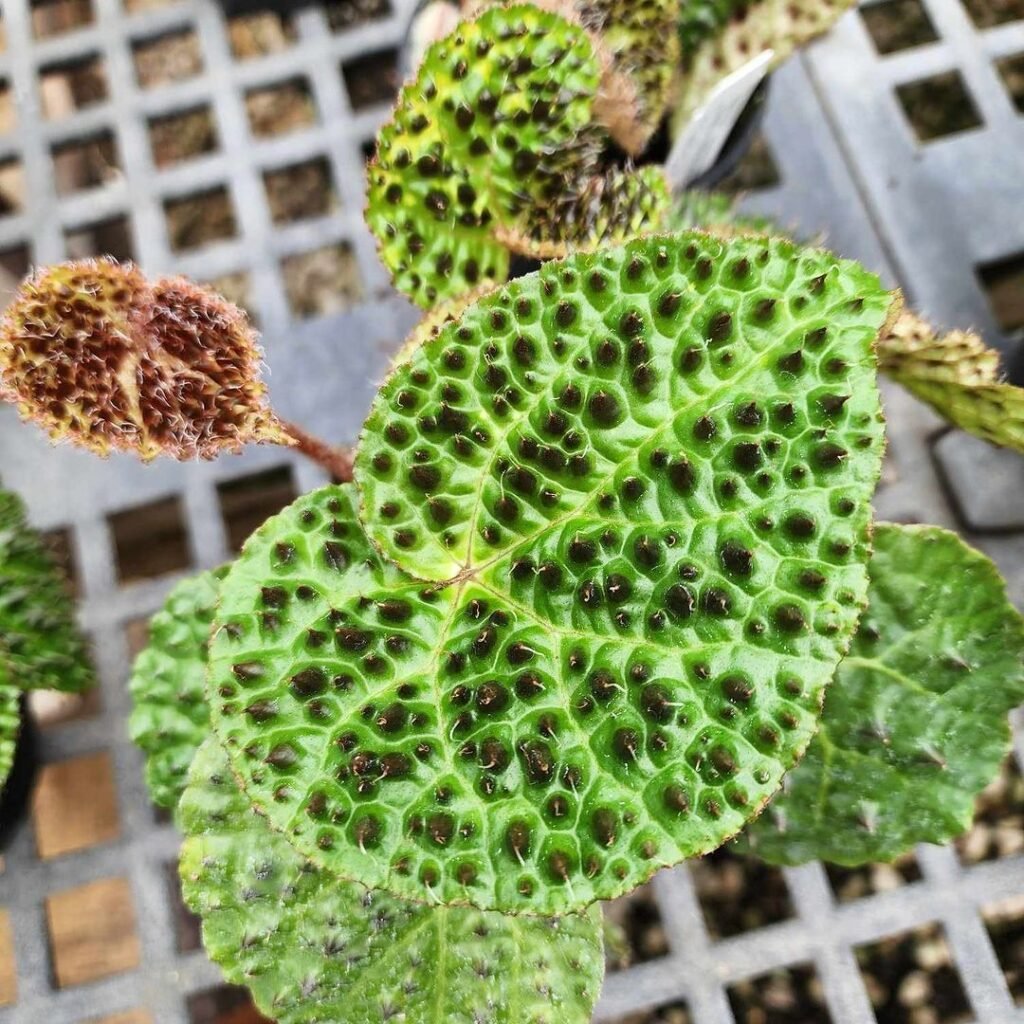
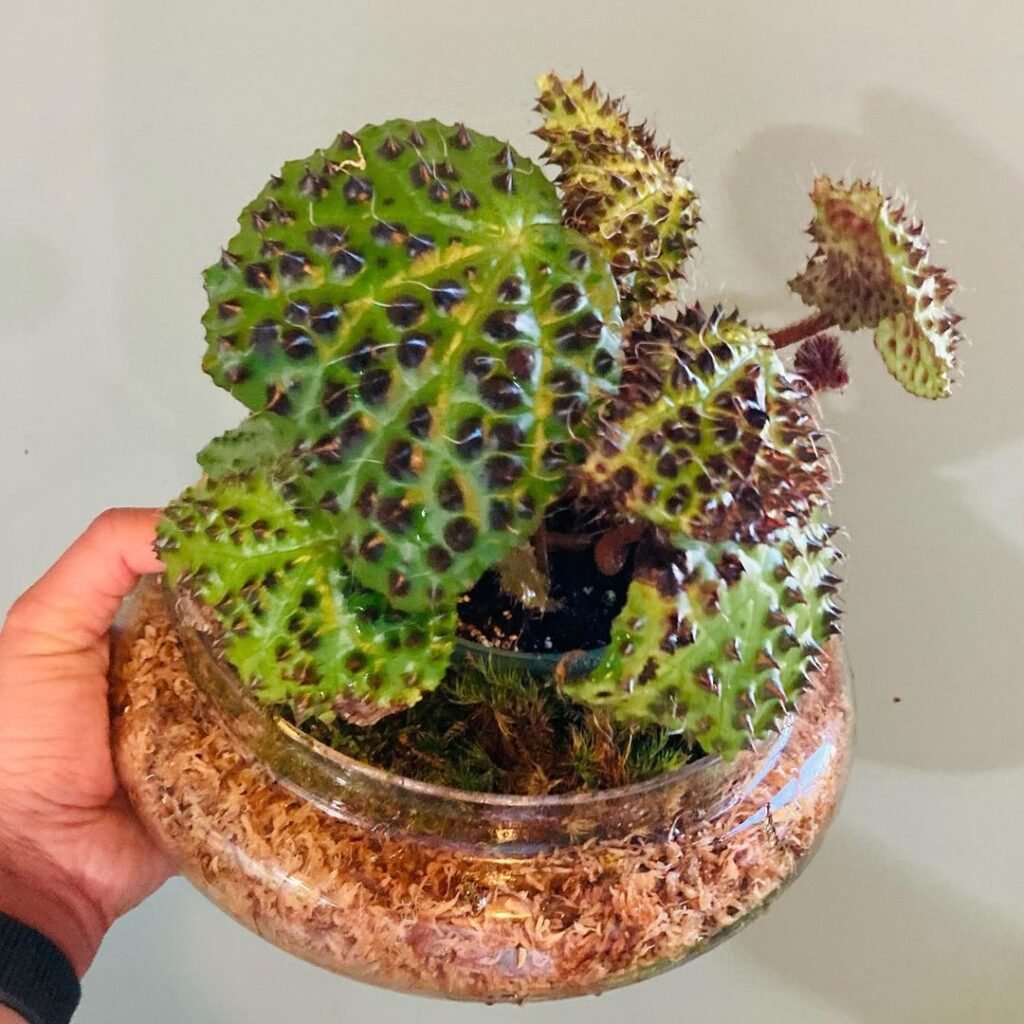
The appearance of Begonia Melanobullata is its standout feature, captivating plant enthusiasts with its unique and striking foliage. In this section, we’ll delve into the visual characteristics that make this begonia a standout choice for indoor gardens.
Foliage and Leaf Patterns
Begonia Melanobullata’s leaves are the primary attraction. They are medium-sized, typically 3-4 inches in length, and deeply green in color. The leaves are adorned with small, nearly black dots, creating a visually stunning effect. These dark spots are responsible for its common name, “Black Eyed Begonia.” The juxtaposition of the rich green background and the dark dots is nothing short of captivating, adding an exotic touch to your plant collection.
Growth Habit
This begonia exhibits a compact and bushy growth habit, making it an ideal choice for various settings. It typically reaches a height of 8-10 inches, with a similar spread. Its upright growth makes it suitable for tabletops, shelves, or as part of decorative arrangements. The symmetrical growth and unique foliage patterns contribute to its aesthetic appeal.
Flowers
While the primary focus is on its foliage, Begonia Melanobullata does produce small and delicate pink flowers. These flowers are charming and can be a delightful surprise when they appear. However, it’s important to note that the primary ornamental value of this begonia lies in its striking leaves. Nonetheless, the occasional appearance of flowers adds an extra layer of beauty to the plant.
To help you visualize the visual appeal of Begonia Melanobullata, here’s a table summarizing its key appearance characteristics:
| Characteristic | Description |
|---|---|
| Leaf Color | Deep green |
| Leaf Patterns | Small, nearly black dots (black-eyed) |
| Growth Habit | Compact and bushy |
| Height | 8-10 inches |
| Flower Color | Delicate pink |
Not the plant for you? Check out my full list of 78 Types of Begonia!
Begonia Melanobullata Care Tips
To ensure your Begonia Melanobullata thrives and maintains its unique appearance, it’s crucial to provide proper care. In this section, we’ll discuss essential care tips for this begonia species.
Light and Soil Requirements
Light: Begonia Melanobullata thrives in bright, indirect sunlight. Place it near a north or east-facing window to ensure it receives the ideal lighting conditions. Avoid direct sunlight, as it can scorch the leaves.
Soil: Use a well-draining potting mix with good aeration. A mixture of peat moss, perlite, and a small amount of orchid bark works well. Ensure the pot has drainage holes to prevent waterlogging.
Watering Begonia Melanobullata
Proper watering is crucial for the health of your Begonia Melanobullata. Follow these guidelines:
- Keep Soil Moist: This begonia prefers consistently moist soil. Water it when the top inch of the soil feels dry to the touch.
- Watering Technique: Water the plant thoroughly but avoid allowing it to sit in standing water. Empty the saucer beneath the pot after watering to prevent root rot.
- Humidity: Begonia Melanobullata enjoys high humidity levels. You can maintain humidity by misting the plant, using a humidity tray, or placing a humidifier nearby.
- Temperature: Maintain temperatures between 60-75°F (15-24°C). Avoid exposing it to cold drafts or extreme heat sources.
Fertilizing Begonia Melanobullata
Regular fertilization is essential to support healthy growth and vibrant foliage. Use a balanced, water-soluble fertilizer formulated for houseplants. During the growing season (spring through early autumn), feed your Begonia Melanobullata every 4-6 weeks. Reduce or discontinue fertilization in the dormant winter months.
With proper care, your Begonia Melanobullata will continue to display its captivating appearance and thrive in your indoor garden. In the upcoming sections, we’ll explore topics like pruning, propagation, and seasonal care to ensure its long-term health and beauty.

Begonia Melanobullata Humidity and Temperature
Maintaining the right humidity and temperature conditions is crucial for the well-being of Begonia Melanobullata. In this section, we’ll discuss how to provide the ideal environment for this begonia to thrive.
Humidity Requirements
Begonia Melanobullata is a tropical plant and thrives in high humidity. Here are some tips to ensure the proper moisture levels for your plant:
1. Humidity Tray: Place a tray filled with water and pebbles near the plant. As the water evaporates, it increases the humidity around the begonia.
2. Regular Misting: Gently mist the plant’s leaves regularly, especially during dry spells or in indoor environments with low humidity.
3. Use a Humidifier: Consider using a humidifier to maintain consistent humidity levels, especially during the drier winter months.
4. Grouping Plants: Position your Begonia Melanobullata near other plants. Grouping plants together can create a microclimate with higher humidity.
Temperature Range
Maintaining the right temperature is crucial for the health of your Begonia Melanobullata. Here are the temperature guidelines to follow:
1. Ideal Temperature: Begonia Melanobullata thrives in temperatures ranging from 60-75°F (15-24°C). Try to keep it within this comfort zone.
2. Avoid Drafts: Protect your plant from drafts and sudden temperature changes. Ensure it’s placed away from vents, doors, or windows that may expose it to cold drafts.
3. Winter Care: During the winter months, if your indoor environment becomes cooler, consider moving your begonia to a warmer location or using a heating pad to maintain adequate temperature.
By paying close attention to humidity and temperature, you can create an environment in which your Begonia Melanobullata will flourish.
Fertilizing Begonia Melanobullata
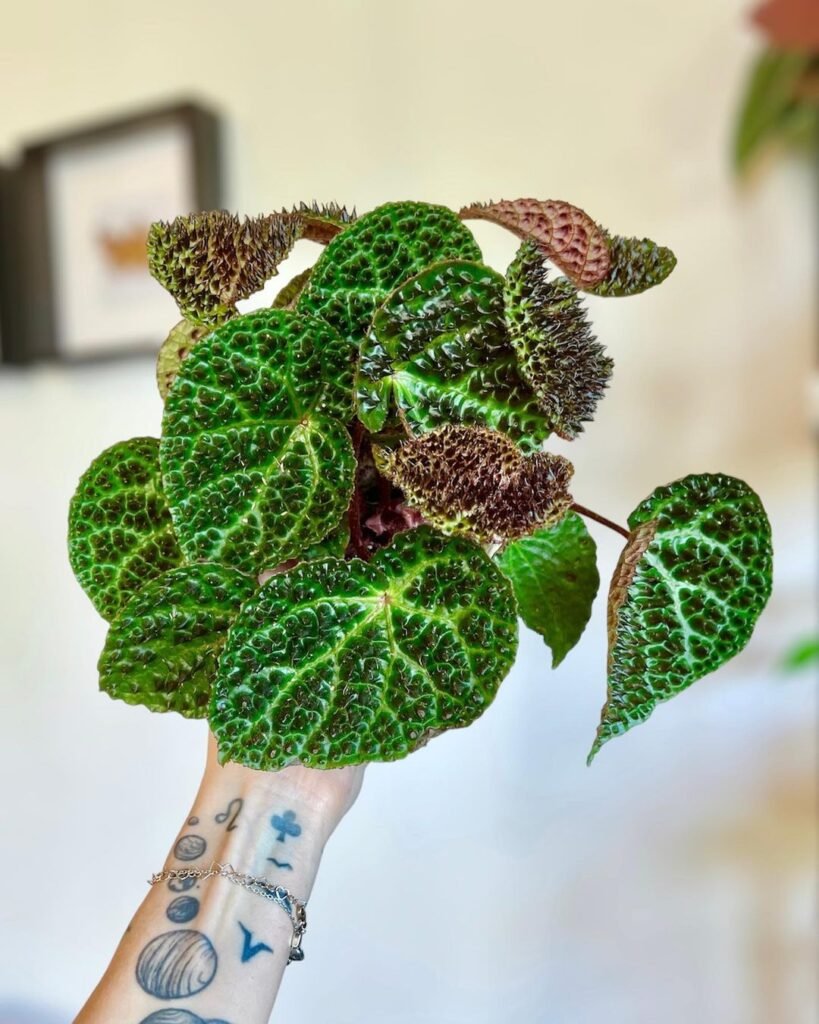
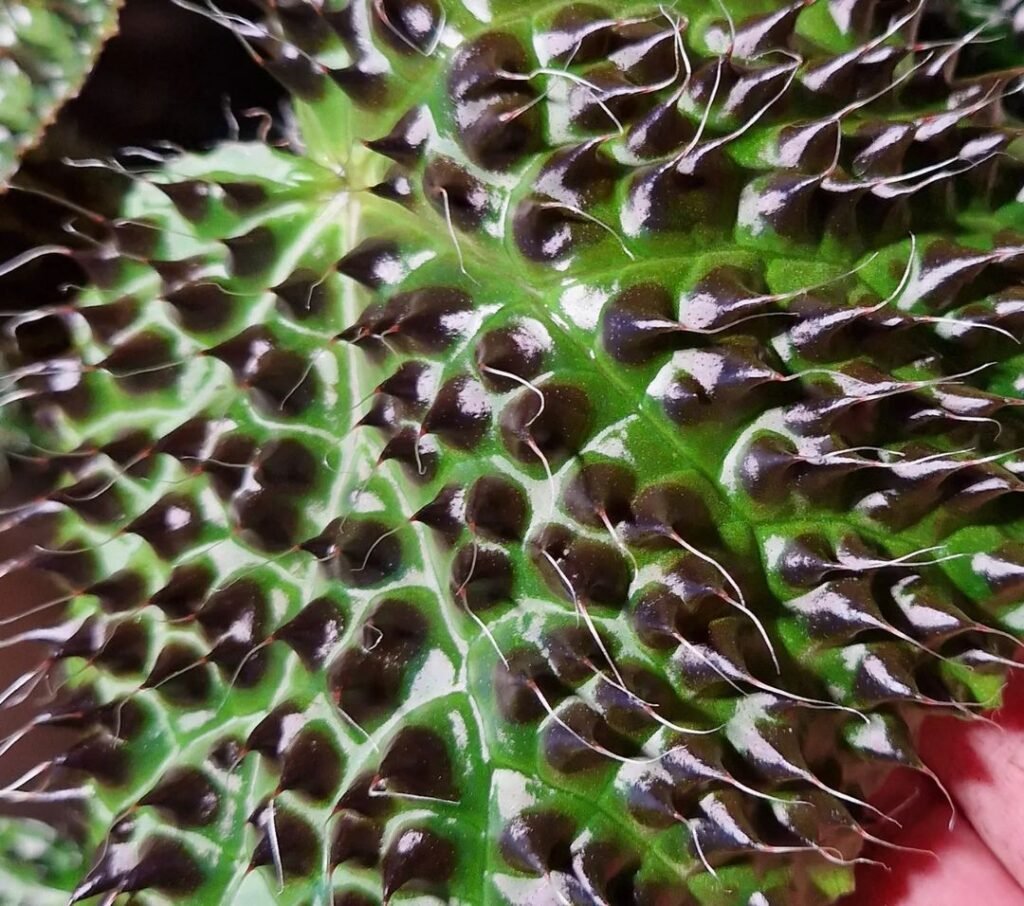
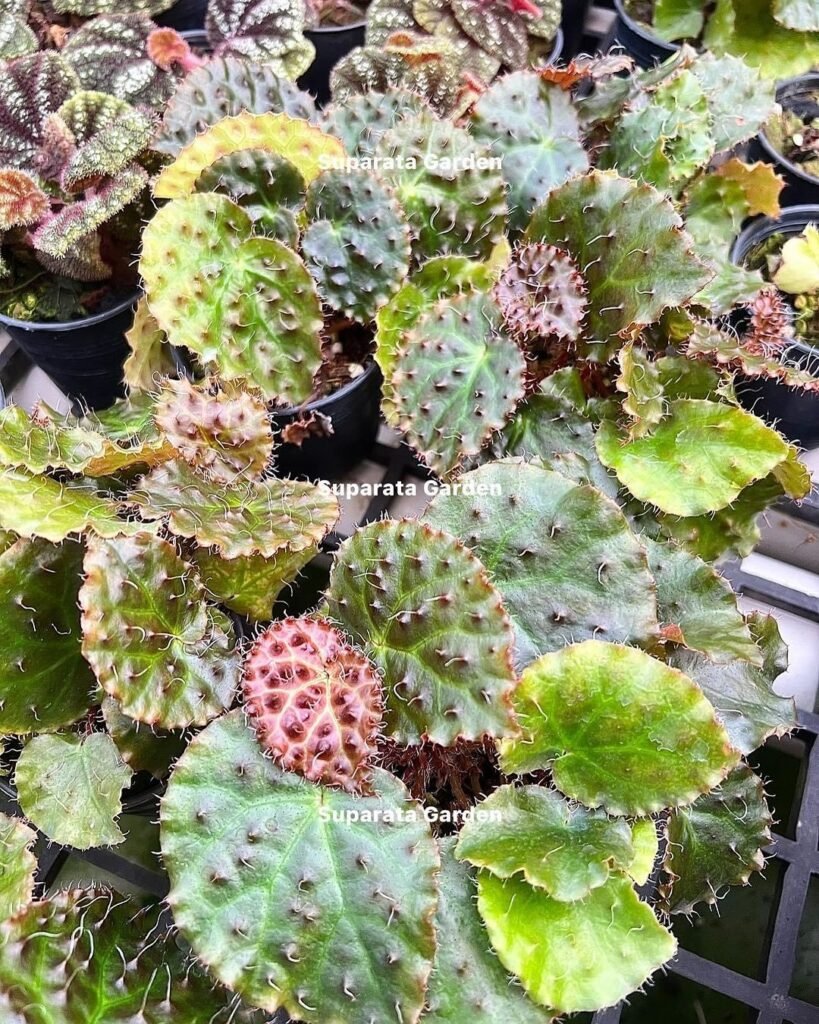
Fertilizing your Begonia Melanobullata is essential for promoting healthy growth and vibrant foliage. In this section, we’ll discuss the best practices for fertilizing this unique begonia species.
Fertilizer Selection
Choose a balanced, water-soluble fertilizer formulated for houseplants. The N-P-K (nitrogen-phosphorus-potassium) ratio should be relatively balanced, such as a 20-20-20 or 10-10-10 fertilizer.
Fertilizing Schedule
The fertilizing schedule depends on the plant’s growth cycle. Here’s a general guideline to follow:
1. Growing Season: During the active growing season, which typically spans from spring to early autumn, fertilize your Begonia Melanobullata every 4-6 weeks. This will provide the necessary nutrients for healthy development.
2. Winter Rest: In the winter, when the plant enters a dormancy period with reduced growth, you can reduce or even discontinue fertilization. During this time, the plant’s nutrient requirements are lower.
Application Technique
When fertilizing your Begonia Melanobullata, follow these steps:
1. Dilute Fertilizer: Dilute the fertilizer according to the package instructions. It’s essential not to use a full-strength solution to avoid harming the plant.
2. Watering After Fertilizing: After applying the diluted fertilizer, water the plant to distribute the nutrients evenly through the soil.
3. Avoid Fertilizing Dry Plants: Don’t fertilize your begonia when the soil is dry, as this can potentially harm the roots. Ensure the soil is already slightly moist before applying fertilizer.
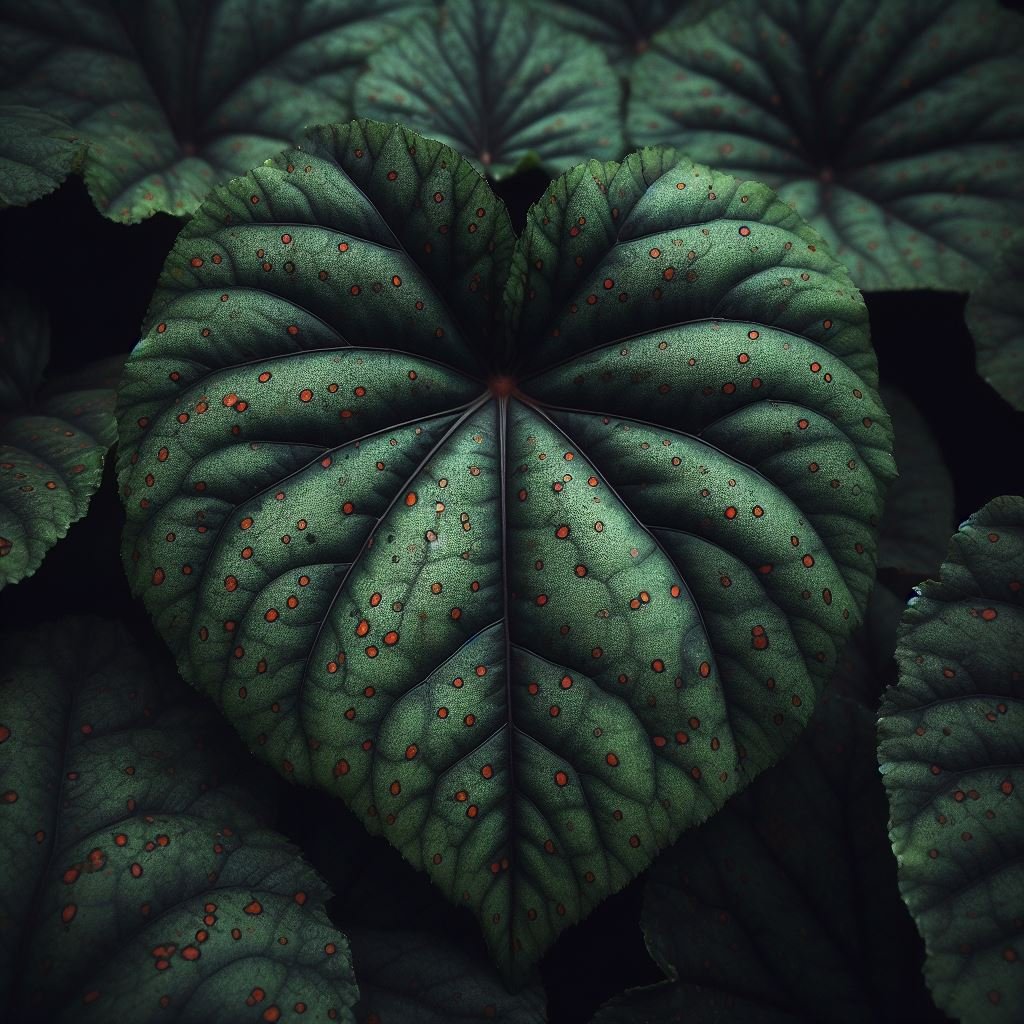
Begonia Melanobullata Pruning and Shaping
Pruning and shaping your Begonia Melanobullata are essential practices to maintain its appearance, health, and size. In this section, we’ll explore the techniques and tips for effectively pruning and shaping your begonia.
Pruning Dead or Yellowing Leaves
Regularly inspect your Begonia Melanobullata for dead or yellowing leaves and promptly remove them. This not only enhances the plant’s appearance but also prevents the spread of disease. Use clean, sharp scissors or pruning shears to make clean cuts.
Encouraging Bushier Growth
To promote a bushier appearance, consider pinching the tips of the plant. This encourages branching and results in a denser, more compact growth habit. Pinching can be done during the active growing season, typically in the spring or early summer.
Controlling Size
If your begonia becomes too large for its designated space, you can trim it back by pruning. Focus on cutting back the longer stems and maintaining the desired size and shape. Be mindful not to remove too much foliage at once to avoid shocking the plant.
Training and Shaping
Begonia Melanobullata can be trained to a certain shape or form. You can use stakes or small trellises to guide the growth and create a specific appearance, such as an upright or cascading shape.
Pruning Table
Here’s a table summarizing the key pruning and shaping practices for Begonia Melanobullata:
| Pruning Task | Timing | Tools Needed | Purpose |
|---|---|---|---|
| Remove Dead or Yellowing Leaves | As needed | Clean, sharp scissors or pruning shears | Enhance appearance and prevent disease spread |
| Encourage Bushier Growth | Spring or early summer | Fingers or small scissors | Promote branching and denser growth |
| Control Size | As needed | Pruning shears | Trim back to maintain size and shape |
| Training and Shaping | As needed | Stakes or small trellises | Create a specific growth form |
Begonia Melanobullata Propagation and Repotting
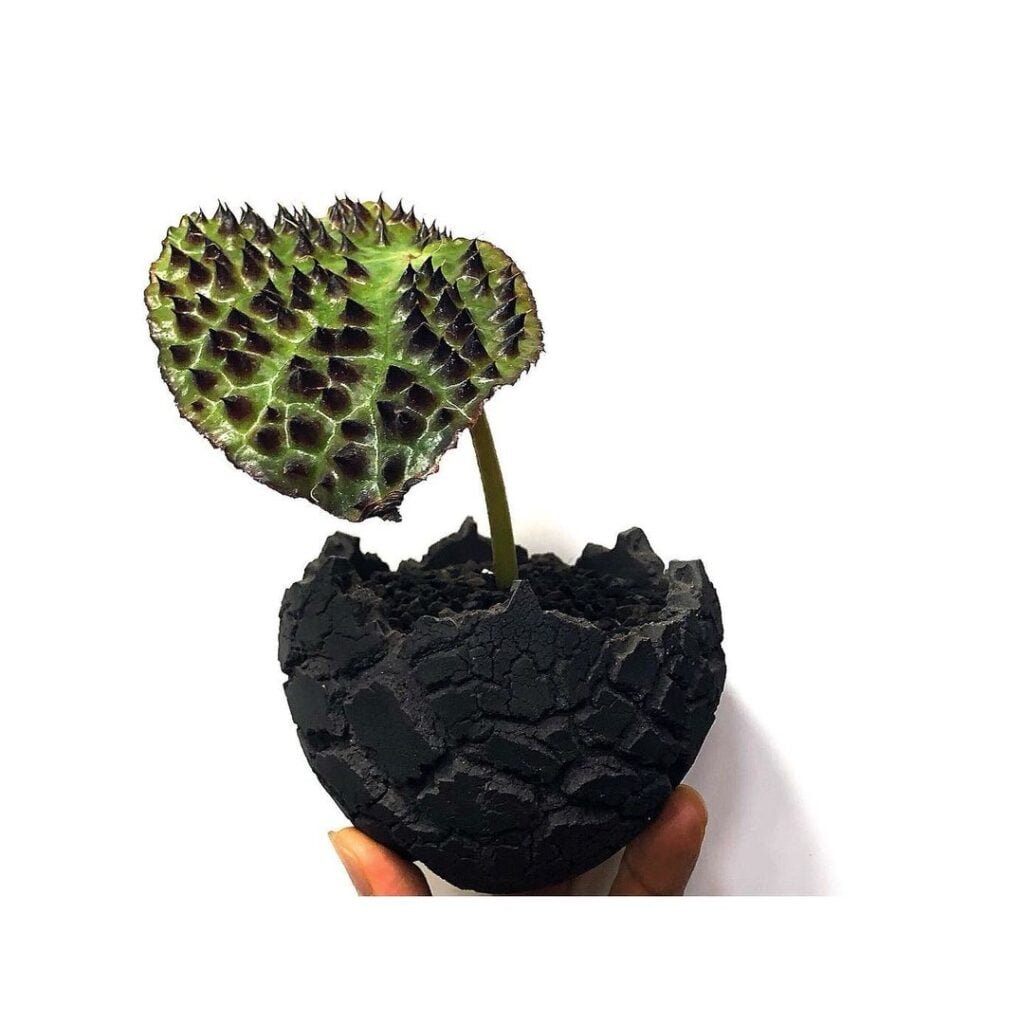
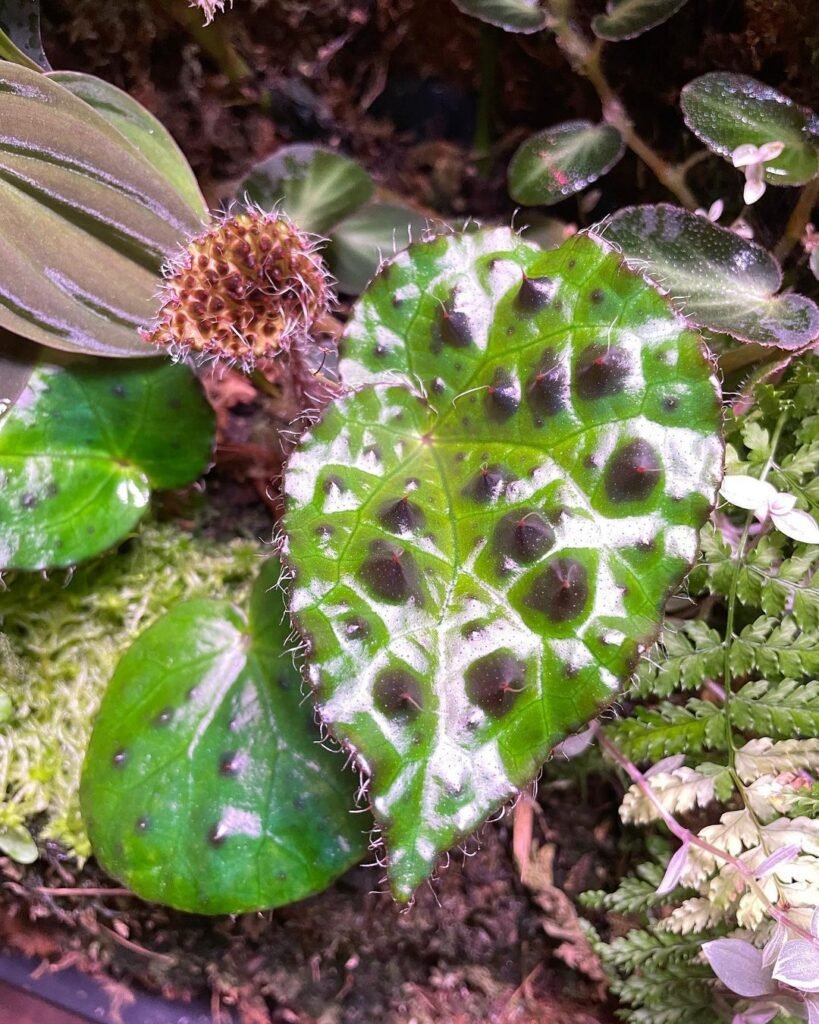
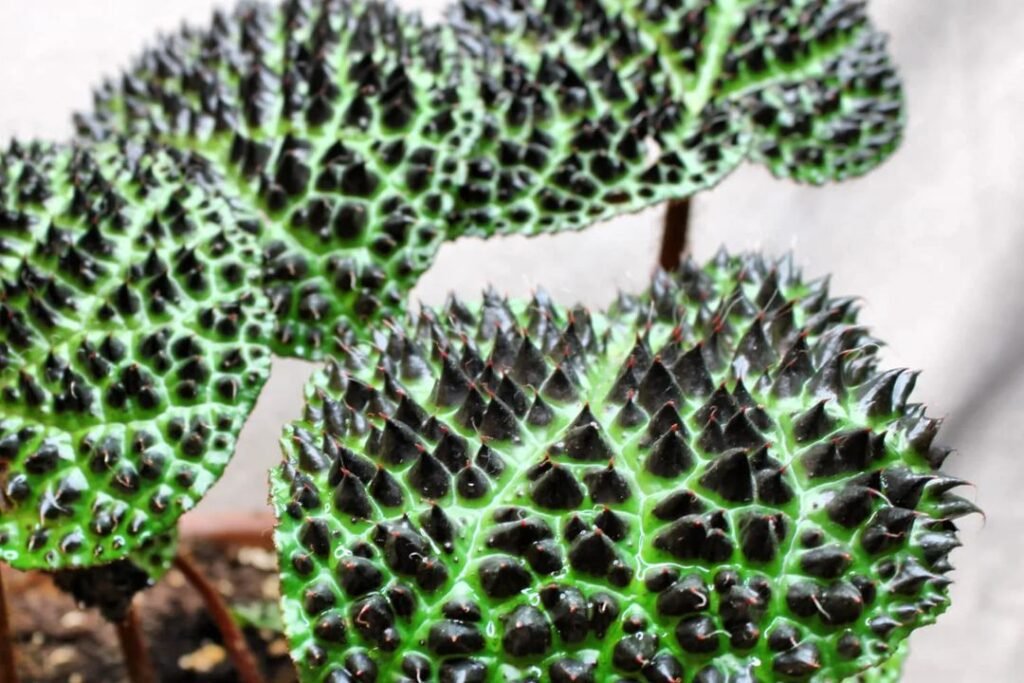
Propagating your Begonia Melanobullata allows you to expand your collection or share this unique plant with others. Additionally, repotting is necessary to provide adequate space for growth. In this section, we’ll discuss propagation and repotting techniques.
Propagation Methods
There are several methods to propagate Begonia Melanobullata:
1. Leaf Cuttings: Take a healthy leaf and cut it into sections, ensuring that each section has a vein. Plant these sections in a well-draining mix, and they will eventually develop into new plants.
2. Stem Cuttings: Cut a healthy stem just below a leaf node and plant it in a suitable potting mix. Roots will develop at the nodes, and a new plant will emerge.
3. Division: If your begonia has grown into a clump with multiple stems, you can carefully divide it into smaller plants and repot them individually.
Propagation Timing
Propagation is typically best done in the spring or early summer when the plant is actively growing. This allows the new plants to establish themselves during the growing season.
Repotting Guidelines
Repotting your Begonia Melanobullata is necessary when it becomes root-bound or outgrows its current pot. Here’s how to approach repotting:
1. Choose the Right Pot: Select a slightly larger pot with good drainage. Begonia Melanobullata prefers being slightly root-bound, so don’t choose a pot that’s too large.
2. Gently Remove from the Current Pot: Carefully slide the plant out of its current pot, being mindful not to damage the roots.
3. Inspect the Roots: Check the root system for any signs of disease or rot. Trim away damaged roots.
4. Add Fresh Soil: Fill the new pot with fresh, well-draining potting mix. Place the begonia in the center and add soil around it, leaving some space at the top.
5. Water Thoroughly: Water the plant after repotting to help settle the soil.
By following these propagation and repotting guidelines, you can ensure the continued health and vitality of your Begonia Melanobullata.
Begonia Melanobullata Seasonal Care
Understanding the seasonal care needs of Begonia Melanobullata is essential for providing the right environment throughout the year. In this section, we’ll explore the adjustments needed for each season.
Spring
1. Light: Ensure your begonia receives bright, indirect sunlight as it enters the active growing season.
2. Fertilize: Resume regular fertilization, providing nutrients every 4-6 weeks.
3. Pruning: Consider pinching the tips to encourage bushier growth and maintain the desired shape.
Summer
1. Watering: In hot summer months, monitor soil moisture closely and water as needed to keep it consistently moist.
2. Humidity: High humidity is crucial. Continue misting the plant and using a humidity tray.
Fall
1. Light: As the days shorten, maintain adequate light levels, but be mindful of lower light conditions indoors.
2. Fertilize: Reduce the frequency of fertilization as the plant’s growth naturally slows down.
3. Pruning: As growth slows, you may need less frequent pruning.
Winter
1. Light: Ensure your begonia receives adequate light, but avoid direct sunlight.
2. Watering: Reduce watering and allow the soil to partially dry between watering sessions.
3. Humidity: Maintain humidity using methods like misting or a humidifier.
Begonia Melanobullata Companion Plants
Selecting suitable companion plants to grow alongside your Begonia Melanobullata can enhance the visual appeal of your indoor garden. In this section, we’ll explore some excellent choices for companion plants that complement the unique appearance of this begonia.
1. Ferns
Ferns are an excellent choice as companions for Begonia Melanobullata. Their lush, feathery fronds provide a beautiful contrast to the bold, spotted leaves of the begonia. Both plants share similar preferences for humidity and indirect light, making them compatible roommates.
2. Calathea Varieties
Calathea plants, known for their intricate leaf patterns and vibrant colors, pair wonderfully with Begonia Melanobullata. The diverse Calathea species offer a variety of leaf shapes and color combinations, creating an eye-catching display.
3. Peperomia
Peperomia plants come in a wide range of foliage patterns and colors, making them an ideal choice to complement the unique appearance of Begonia Melanobullata. Their compact size and adaptability to similar care conditions make them a perfect match.
4. Fittonia (Nerve Plant)
Fittonia, also known as the nerve plant, features strikingly veined leaves. It adds a vibrant pop of color and texture when placed alongside Begonia Melanobullata. Both plants thrive in high humidity and indirect light, making them great companions.
Pest Control Tips for Begonia Melanobullata
While Begonia Melanobullata is generally resilient, it may still encounter common indoor plant pests. In this section, we’ll discuss how to identify, prevent, and control potential pest infestations effectively.
Common Pests
1. Mealybugs: These small, white, cotton-like insects can cluster on leaves and stems, feeding on plant sap.
2. Spider Mites: Tiny, red or brown mites can create fine webbing on your plant and cause stippling on the leaves.
3. Aphids: These small, soft-bodied insects can be green, black, or brown and often congregate on new growth, causing damage.
4. Scale Insects: Scale insects appear as small, flat, oval-shaped bumps on leaves or stems, and they can be brown or black.
Identification and Prevention
To keep your Begonia Melanobullata healthy and pest-free, perform regular inspections of the plant. Ensure you maintain proper humidity levels and cleanliness in the vicinity of your plants to discourage infestations.
Pest Control Methods
If you do identify pests, consider the following control methods:
1. Manual Removal: Carefully remove pests with a cotton swab dipped in rubbing alcohol or soapy water. Be gentle to avoid damaging the plant.
2. Insecticidal Soap: Use a mild insecticidal soap to treat pests. Ensure it’s safe for begonias and follow the manufacturer’s instructions.
3. Neem Oil: Neem oil can help control a variety of pests. Dilute it and apply as directed on the packaging.
4. Isolation: If an infestation is severe, consider isolating the affected plant to prevent the pests from spreading to other plants.
By promptly identifying and addressing pest issues, you can keep your Begonia Melanobullata thriving and pest-free.
Reviving a Sick or Wilting Begonia Melanobullata
If your Begonia Melanobullata shows signs of wilting, yellowing, or general decline, it’s essential to take action to revive its health. In this section, we’ll explore the steps to bring a sick begonia back to life.
Assessment
Start by assessing the plant’s condition. Look for signs of overwatering, underwatering, or pest infestations. Check the root system for root rot or other issues.
Corrective Actions
1. Adjust Watering: If you suspect overwatering, allow the soil to dry out slightly between waterings. If underwatering is the issue, water your plant more consistently, ensuring the soil stays moderately moist.
2. Pruning: Remove dead or yellowing leaves to improve the overall appearance and help the plant focus its energy on healthy growth.
3. Pest Control: Address any pest issues following the methods discussed in the previous section.
4. Repotting: If the root system appears unhealthy, consider repotting your begonia with fresh soil and proper drainage.
5. Maintain Ideal Conditions: Ensure that your Begonia Melanobullata receives the right humidity, light, and temperature conditions as discussed in previous sections.
Love all types of Begonia? Make sure to catch up on my post on how to care and grow for begonia boliviensis. After you’ve finished reading that, why not also check out my care guide on how to grow begonia gryphon.
Conclusion
In conclusion, Begonia Melanobullata, with its captivating appearance and unique foliage, is a delightful addition to any indoor garden. To ensure the well-being of this begonia species, it’s essential to provide the right care, including proper lighting, humidity, and temperature levels. Regular maintenance practices such as pruning, shaping, propagation, and repotting can help you maintain the plant’s health and appearance. Additionally, selecting suitable companion plants can enhance the visual appeal of your indoor garden. By following the provided care tips and addressing potential issues promptly, you can enjoy the beauty of Begonia Melanobullata for years to come.
FAQs
Is Begonia Melanobullata suitable for beginners?
Yes, Begonia Melanobullata can be a suitable choice for beginners. While it has some specific care requirements, such as bright, indirect light and consistent humidity, it is generally forgiving and can adapt well to indoor environments.
Can I grow Begonia Melanobullata in low light conditions?
Begonia Melanobullata prefers bright, indirect sunlight, but it can tolerate lower light conditions, such as being placed in a north-facing window. However, it may not exhibit as vibrant leaf patterns in low light.
How often should I fertilize my Begonia Melanobullata?
During the active growing season, which typically spans from spring to early autumn, you can fertilize your Begonia Melanobullata every 4-6 weeks. Reduce or discontinue fertilization during the winter months when the plant is dormant.
Can I place my Begonia Melanobullata outdoors?
Begonia Melanobullata is best suited for indoor environments, as it is sensitive to temperature fluctuations and cannot tolerate frost or direct sunlight. It’s recommended to keep it as an indoor plant.
Is Begonia Melanobullata safe for pets?
Begonia Melanobullata is considered toxic to pets if ingested. It’s essential to keep it out of reach of curious pets, as consumption of the leaves can lead to digestive issues.

Writer/Green Thumb/Explorer – Rooted deep in the rich soils of Devon, I’ve cultivated a vast expertise in plant care, helping greenery thrive in homes across the UK. When I’m not crafting detailed plant care guides, I’m journeying through the lush landscapes of the West Country, unearthing nature’s secrets and sharing them with fellow plant enthusiasts. Every leaf has a story, and I’m here to tell it.





